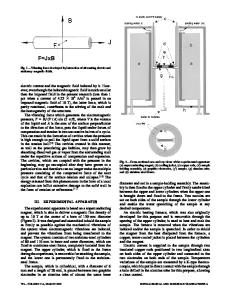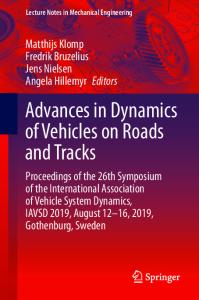An investigation of the effects caused by electromagnetic vibrations in a hypereutectic Al-Si alloy melt
- PDF / 1,670,194 Bytes
- 8 Pages / 612 x 792 pts (letter) Page_size
- 27 Downloads / 366 Views
I.
INTRODUCTION
APPLICATION of electric and/or magnetic fields to the processing or treatment of materials has been of particular interest for almost 2 decades. Different combinations of stationary and/or alternating fields have been employed for a wide range of purposes, including stirring, shaping, etc.[1] Among these combinations, certain ones are able to induce electromagnetic forces which can act as powerful vibrating forces in the melt and affect the solidification structure on a microscopic scale. However, the abilities of these powerful forces have not been fully investigated so far. In two recent works, Vives studied the effects of electromagnetic vibrations induced by the interaction of collinear variable and stationary magnetic fields and alternating electric and stationary magnetic fields during the solidification of aluminum alloys and reported considerable structural refinements.[2,3] In the latter, extensive refinement was observed after a threshold electromagnetic pressure where the cavitation phenomenon was likely to occur. The cavitation phenomenon, which is widely studied in the field of ultrasonic technology[4,5,6] and is not well practiced in metallurgy due ALIREZA RADJAI, Advanced Technology Research Scientist, formerly with New Energy and Industrial Technology Development Organization (NEDO), Tokyo, Japan, is now with Japan Science and Technology Corporation (JST) at Materials Processing Department, National Industrial Research Institute of Nagoya, Hirate-cho, Kita-ku, Nagoya Japan. KENJI MIWA, Head of the Advanced Processing Laboratory, and TOSHIYUKI NISHIO, Senior Research Scientist, are with the National Industrial Research Institute of Nagoya, AIST, MITI, Hirate-cho, Kita-ku, Nagoya, Japan. Manuscript submitted May 20, 1997. METALLURGICAL AND MATERIALS TRANSACTIONS A
to the difficulties arising from the implementation of ultrasonic devices at high temperatures, can be generated by electromagnetic vibrations. This research is intended to study the effects of electromagnetic vibrations induced by the simultaneous application of alternating electric and stationary magnetic fields and to investigate the mechanism by which they are brought about. For this purpose, an experimental apparatus, which enables the freezing of the ongoing process at any desired temperature in order to acquire an exact knowledge of its progress, is designed and assembled. A hypereutectic Al-Si alloy melt containing suspended silicon particles is used as the starting material, and the effects of vibrations are examined before and after the start of solidification. Variations of cooling rate under different experimental conditions are studied for the experimental apparatus, and conditions for obtaining identical cooling rates are established. II.
THEORETICAL PRINCIPLE
Simultaneous imposition of a direct magnetic field B and an alternating electric field of the current density J on a conducting liquid results in the induction of a vibrating electromagnetic body force ‘‘F 5 J x B’’ inside the liquid, with a frequency
Data Loading...










